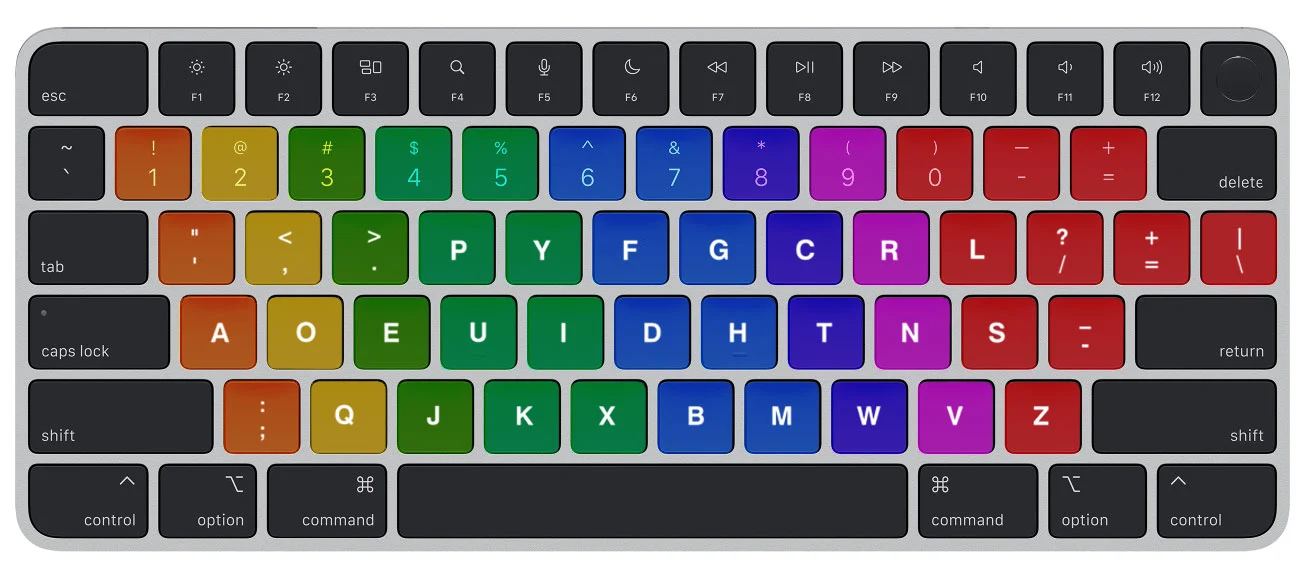Dvorak Touch Typing Training
Know the Dvorak layout
The Dvorak keyboard was developed in the 1930s by Dr. August Dvorak and his brother-in-law, Dr. William Dealey, to increase typing efficiency and reduce finger movement. Unlike the traditional QWERTY layout, the Dvorak keyboard places the most commonly used letters under the strongest fingers, promoting faster typing with less strain. Designed based on ergonomic principles and extensive research on letter frequency and hand movements, the Dvorak layout is praised for its potential to reduce typing fatigue and improve overall typing speed.
Dvorak Typing Touch Lesson

On a Dvorak keyboard, the finger positioning is designed to minimize finger movement and maximize typing efficiency. Here’s a breakdown of the finger positions and the corresponding keys each finger should press:
Home Row Positioning
The home row on the Dvorak keyboard is where your fingers should naturally rest.
- Left Pinky: A
- Left Ring Finger: O
- Left Middle Finger: E
- Left Index Finger: U and I
- Right Index Finger: D and H
- Right Middle Finger: T
- Right Ring Finger: N
- Right Pinky: S
- Thumbs: Spacebar

Key Assignments by Finger
Left Hand
- Home Row: A
- Top Row: ' (apostrophe)
- Bottom Row: ; (semicolon)
- Home Row: O
- Top Row: , (comma)
- Bottom Row: Q
- Home Row: E
- Top Row: . (period)
- Bottom Row: J
- Home Row: U, I
- Top Row: P, Y
- Bottom Row: K, X
Right Hand
- Home Row: D, H
- Top Row: F, G
- Bottom Row: B, M
- Home Row: T
- Top Row: C
- Bottom Row: W
- Home Row: N
- Top Row: R
- Bottom Row: V
- Home Row: S
- Top Row: L
- Bottom Row: Z
Thumbs: Both thumbs are responsible for pressing the spacebar.
The Shift keys are pressed with the pinkies.
The Enter key is pressed with the right pinky.
The Backspace key is pressed with the right pinky or ring finger.
By adhering to this finger positioning, you can reduce the distance your fingers need to travel, making typing more efficient and comfortable on the Dvorak keyboard.
